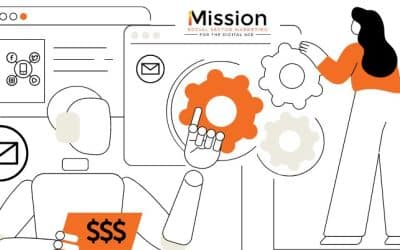It’s a crazy time. Your nonprofit agency may be expanding to meet community needs, or you may have gone virtual, or you may have seen your spring fundraising events go “poof” or a mix of these. Whichever situation you are in, there are steps you can take to conserve your nonprofit’s cash during the Covid-19 emergency. Pull your team together virtually to talk through ideas to get in more payments as quickly as possible to keep your agency rolling and brainstorm ways to slow down cash outflow. Here’s a quick list of ideas to get you started:
Keep Payments Flowing In:
- Speak to your current grant funders. Talk to your current grant funders about converting your restricted grants to unrestricted, and let them know what amount of unrestricted funding you need. While it may be a long shot, getting any portion of a grant freed up for all types of unforeseen expenses would be ideal.
- Apply for new grants. Many community foundations in Connecticut have set up resiliency funds to get extra grant funding out to nonprofits handling basic needs, see here. For most of these foundations, you need to have had a relationship with them already, but there are exceptions.
- State agencies. It is often challenging to get timely payment from many state agencies during good times, nevermind during a crisis. Governor Lamont wants to keep nonprofits whole during this time so the state is looking into allowing agencies to move funds across specific accounts. The Department of Social Services is keeping hardship funding to clients moving, and the Office of Early Childhood is similarly committed to keeping their funding going also. If you are finding State payments slowing down even more than what you’d usually see, get on board with CT Nonprofit Alliance, CAHS, or whichever nonprofit association fits your agency best, to help push the state for faster payments. As an additional step, contact your state legislators to let them know what’s happening.
- SBA Loans. Loans for small businesses that include nonprofits became available through the CARES Act passed by Congress in March. The funds come from the Small Business Administration (SBA) and the two avenues for funding are the Economic Injury Disaster Loan (EIDL) and the Paycheck Protection Program (PPP). PPP loans are being handled by local banks while the EIDL loan programs are handled via the SBA, and the EIDL can include a $10,000 advance. For additional information on what you should consider before you apply for one of these loans, click here.
Donors Whether you have a large or small donor base, don’t neglect asking for donations at this time. With everyone going virtual, more can be done with online fundraisers and digital giving events, click here for more information. And the word is that some nonprofits are receiving much more than usual in donations now, so it’s a good time to get a campaign going.. The CARES Act includes tax changes to stimulate individual and corporate donations, so it would be wise to set up giving campaigns via your usual platforms like email and social media, as well as to try new platforms to build awareness.
Slow The Cash Outflow:
- Negotiate your payment terms. Talk to your landlord and other vendors about extended payment terms at no interest. Some landlords are offering this to their tenants, but on a case-by-case basis, so you’ll need to contact them directly. Some vendors, including telephone and cable companies, are waiving late payment interest charges or offering a month or more of services for free. Check to see what your vendors are offering and contact them about your agency’s account.
- Delaying payroll tax. Organizations can delay paying the employer portion of certain payroll taxes, including the employer’s share of the Social Security tax, through the end of 2020. You could defer these tax payments, changing them into two equal payment installments which would be due in 2021 and 2022. Notably, the credit is not available to employers receiving assistance through the Paycheck Protection Program. If you want to explore this option, you’d be best served by talking with your payroll company on how to set this up properly.
- Personnel. No one wants to have to cut down staff during this crisis, however, you might have to. One idea, which you should review with your board, may be to temporarily suspend pension contributions to conserve cash and help meet payroll. If you do have to reduce personnel costs, consider using the temporary shutdown furlough option at the Connecticut Department of Labor. DOL has set up this option to be fully automatic, meaning it will get cash to your furloughed staff faster. It also allows them to keep their health coverage, and supports your case for PPP loan forgiveness.
- Office Expenses/Field Expenses. If you need supplies of some kind, try reaching out for corporate in-kind donations. Techsoup has hardware, and software, and remote work info, available for nonprofits. If you work with kids, try Donors Choose Corona response.
For additional information and resources, please visit iMissions COVID-19 Resources for Nonprofits. If you have additional cash-saving ideas you’d like to share, please contact us at info@imissioninstitute.org.
About the author:
Dorothy Adams is a nonprofit interim executive and serves on the board of the CT-based community development lender, Capital for Change. To contact Dorothy directly, you can find her on LinkedIn.



